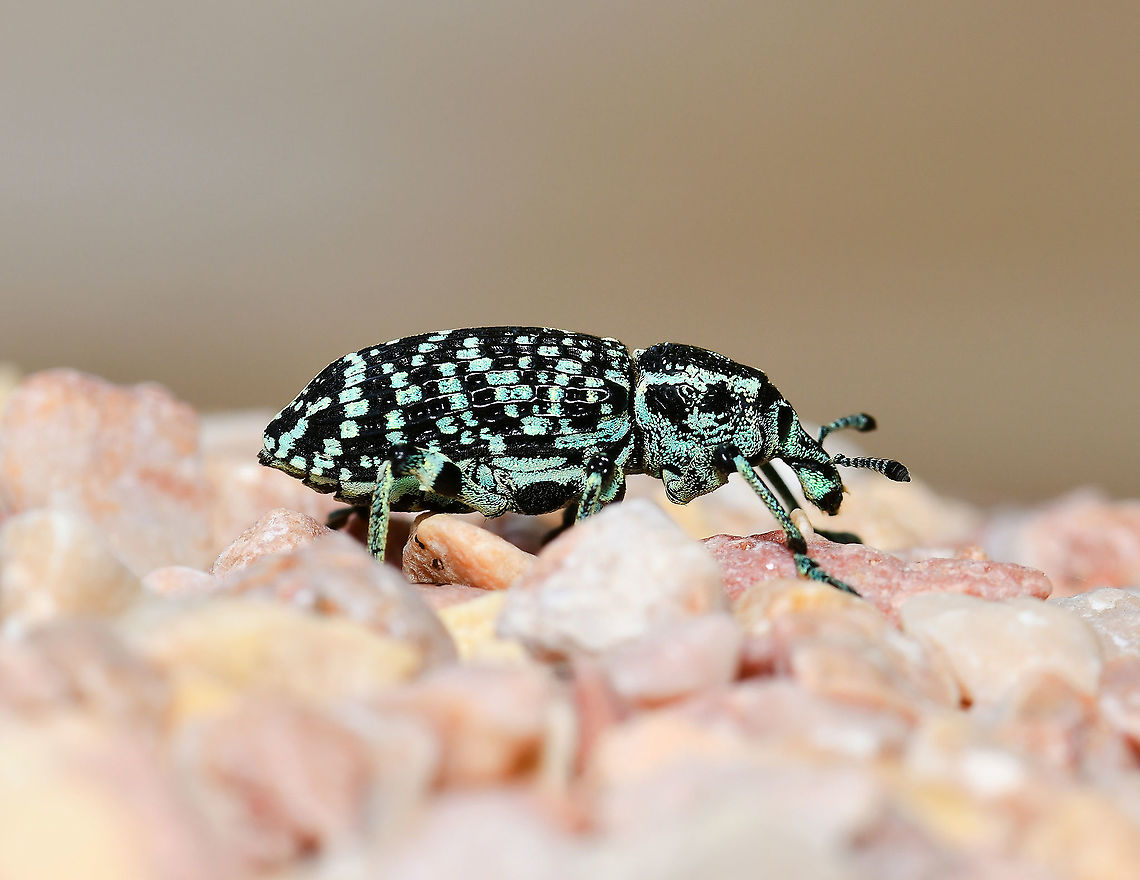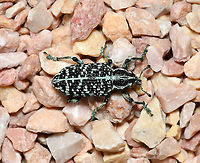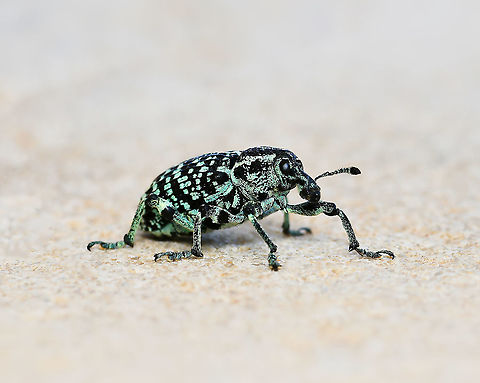 Promoted
Promoted
Botany Bay diamond weevil
Native to this country in the south-east, taking the title of 'first insect from Australia', after being collected by Sir Joseph Banks when Captain Cook’s expedition landed in Botany Bay in 1770, then recorded officially in 1775 by Danish entomologist Johan Fabricius.
It is a lovely looking insect whose colour is predominantly black with patches of metallic blue or green scales. Both immature and adult stages live on just 28 of our 1000 Acacia species. The larvae form tunnels in the trunk and roots of the plant.
N.B. not captive, seen making its way across pot plant gravel.
25 mm body length, perhaps female as they are the larger size.


"Chrysolopus spectabilis" is a species of weevil found in south-eastern Australia. It is up to 25 mm long, with metallic green patterns on a black background. It is a specialist, only known from 28 species of "Acacia".

comments (7)
The Botany Bay diamond weevil (Chrysolopus spectabilis) has a claim to fame! It was the very first insect to be described from Australia! During the first voyage of James Cook, when the ship Endeavour arrived at Botany Bay in 1770, the Botany Bay diamond weevil was collected and described by naturalist Sir Joseph Banks.
It is native to the southeastern part of Australia where it feeds on Acacia. It is somewhat particular--out of 1,000 species of Acacia, the weevil only feeds on 28. {Spotted in NSW, Australia by Ruth Spigelman} #JungleDragon #Botanybaydiamondweevil #Chrysolopusspectabilis #australia
Ruth's photos are a wonderful display of the magnificence found in nature. They are artistic and awe-inspiring. Gasp-worthy, really. Check out more of her photos: https://www.jungledragon.com/user/3314/popular
https://www.facebook.com/jungledragonwildlife
Posted 4 years ago